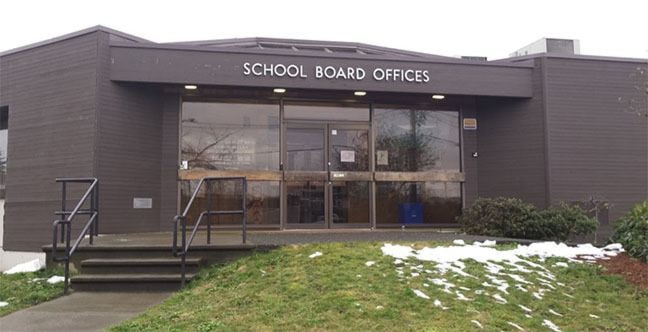Elementary teachers will be getting their recess break back, but no changes appear imminent at Comox Valley high schools in terms of the 4.6-day Alternate Instruction Week that the school district introduced in the fall.
The new schedule has scrapped the standardized recess at elementary schools (though teachers have continued to allot students a daily 15 minutes of physical activity) and given early dismissal on Fridays. SD71 expected the calendar to save $1.75 million.
However, by re-arranging prep time, the union representing Valley teachers says they are working up to 60 additional hours (about 11 days) in the school year.
Last June, the Comox District Teachers’ Association determined the new schedule violated the collective agreement.
“We alleged that the employer was putting teacher prep time outside of the time when students were there,” CDTA president Nick Moore said. “We alleged that they had to have recess in elementary, and that it was unfair to increase the workload of secondary teachers.”
Last week, an arbitrator ruled that recess must be provided to elementary teachers as soon as possible, and that they receive prep time during a school day.
“The arbitrator ruled that recess must be returned for teachers as soon as practicably possible,” said Moore. “The distinction there is ... that it doesn’t necessarily mean recess for students. The teachers’ collective agreement was violated, and teachers are required to have that break at some time in the day.
“We didn’t realize how important recess was to the working life of the teacher,” Moore said. “Not having a break was having a significant impact on teachers, just their wellness at work.”
Reinstating teacher recess, he added, means SD71 needs to find one hour and 15 minutes of weekly instructional time at elementary schools. But for secondary, the arbitrator determined there was no collective agreement language that required teachers to have prep time.
“The arbitrator recognized there was an increased workload for secondary teachers, but that doesn’t overcome the lack of clear language stating that the employer can’t create this kind of schedule,” Moore said. “Secondary teachers are struggling immensely to cope with the current working schedules.”
A CDTA survey indicates about 85 per cent of teachers feel they cannot meet the needs of students, and that the new schedule is affecting their personal lives.
Secondary students attend school about 950 hours a year. Teachers used to instruct 7/8 of that time. Under the current situation, they will teach almost all of the 950 hours.
“It feels like they’re being kicked while they’re down,” Moore said. “There’s no meaningful time to mark, prep the lessons, support students who are struggling. When teachers have an increased workload, it means less time to work one-on-one with our kids.”
The CDTA and SD71 are in discussion.
“The board has to meet with senior management,” school board chair Janice Caton said. “We have to look at the whole picture.”
